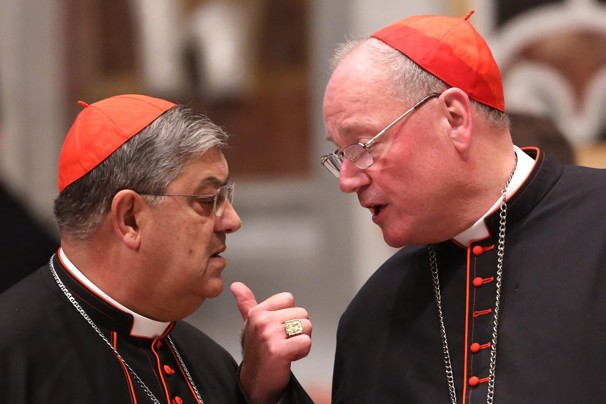Can America Fix Catholicism?
By Mathew N. Schmalz
There’s a media blackout surrounding the lead up to the papal conclave. No interviews—and probably no blogging or podcasts. USCCB spokesperson, Sister Mary Ann Walsh, managed to spin the whole thing quite positively: she weaved in the fact that only American cardinals were doing press conferences in addition to mentions of the official Vatican briefings. She then moved to a nun joke. The Americans brought their pros. Black out it is. But it’s really a temporary cease-fire in the Catholic culture wars: a lull in the battle between the new world and the old, between the church as it is now and the church as it will become. The lead up to the papal conclave has been surprising in many ways. Like other commentators, I had initially expected that the conclave would be held sometime before March 8 since it would give the new pope enough time to settle in before Easter. I also though that curia officials would push for a quick start, since it would benefit established candidates. Clearly, there’s been a push back. The majority of cardinals who aren’t based near St. Peter’s Square seem to be comfortable with the process taking as long as it takes. It’s clear that a lot of this is about politics and that what’s media reporting has dutifully emphasized. But it’s more than that. It’s also about culture—Catholic cultures. It’s always tempting to see Catholicism as a monolith, especially when we are looking at the Vatican. But Catholicism is actually quite diverse. Just as there are numerous cultures that shape Catholicism as it is lived, there are numerous cultures that shape Catholicism as it is governed and administered. America has always been seen as an upstart by Rome. Back on the eve of the 20th century, Pope Leo XIII even penned an encyclical that warned of Americanism in the Catholic Church. While Leo’s concern was the American concept of freedom, I think that many in the Vatican would be most concerned with the freewheeling ways of American cardinals in the media. Cardinals Sean O’Malley and Roger Mahoney have blogs; Cardinals Francis George and Timothy Dolan have become go-to commentators for many media outlets. The American contingent was also preparing to give a press conference right before the black-out was announced. Though many Americans would be shocked to hear this, members of the Catholic hierarchy in the United States are far more open and media savvy than many of their old-world European counter-parts. American bishops and cardinals did not enter this new world willingly. They were dragged, kicking and screaming, into the public spotlight as reports of scandals continued to accumulate and spread. Dealing with the media, and at least appearing to be transparent, is now part of the skill set that any Catholic bishop must have in an American context. In this case, American cardinals have taken advantage of the opportunities presented by the conclave to reach out to the media. It makes a lot sense, pastorally and politically. Vatican officials see things much differently. There’s the continuing story of the Vatileaks revelations, which serves the interests of a rapacious Italian press quite well. But beyond this, interviews, talk-show appearances, blogs—it all seems so modern, so new, so un-Catholic. A European cardinal at-home with the media, like papal contender Gianfranco Ravasi, is still somewhat of an oddity, no matter how popular he might be. Catholicism in Europe has changed in recent decades. Many Catholics have left the church. While pockets of Catholic progressives have remained in places like Germany and Austria, for the most part practicing Catholics in Europe are a fairly traditionalist group. Pope Benedict himself was widely seen as calling for a return to Catholic traditions, whether in the form of the Latin mass or in the revival of Renaissance style vestments. That sense of tradition gives the Catholic Church an other-worldly character: being involved too much in the media is seen not just as bringing church down to earth, but also as potentially dragging it through the mud. Of course, this sense of separateness—and the media silence that accompanies it-- makes it easier to broach controversial topics, like who the next pope should be. American cardinals have learned the hard lesson that you can’t keep the media at bay forever. And what is distinctive about this papal election is how much the media seems to be shaping how the deliberations are framed. Vatican-based cardinals evidently feel that things have gone too far. But eventually the old world does give way to the new—willingly or unwilling.
|
.
Any original material on these pages is copyright © BishopAccountability.org 2004. Reproduce freely with attribution.
